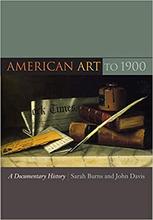Winslow Homer’s The Gulf Stream throws us into a scene with a compromised boat, raging waters, circling sharks, and a dude who seems rather calm considering the circumstances he’s in.
Winslow Homer was a man that really liked the sea. For one, he was born in Boston, where they brag about their Clam Chowder. But as an artist, he came into his own studying the ocean. He lived in England for a few years filtering the fishing port of Cullercoats into his work. And then he moved to Prouts Neck, a town off the coast of Maine, where the sea became a major theme in his art. He was always on the go, taking down references in sketches for his paintings.
The Gulf Stream is a painted scene using oil-on-canvas that’s very much about recognizing mortality, and confronting adversity; the subject of this painting could be interpreted as doing both of those things. My guy is out here without a care in the world, even though it seems like there’s life threatening things in every direction. In 2019, a black man at the center of a painting such as this might be celebrated for its diversity. And we wouldn’t really need a reason to justify having a discussion about why he’s the focal point.
But things were a little different in 1899, a discussion more than likely was had, and this man’s inclusion into the painting is more than justified by the circumstances. For starters, Homer liked to chill in the warm waters of the Atlantic Ocean, visiting the Bahamas and Florida often. In fact, the Gulf Stream is a real place that you have to travel through to get to the Bahamas. It’s a stream of water that carries warm currents of water through the sea. When that warm water mixes with the otherwise cold water, it can change the behavior of the fish as well as provide some rocky weather patterns. Homer’s most recent trip prior to the creation of this painting was in 1898. So there was no doubt an influence there.
Because of the times, the inclusion of a black fisherman would have still been deliberate. I’d like to think that Homer used this man and his surroundings to allude to black people’s constant perseverance in every aspect of life. If that was the case, the reserved demeanor of the man on the boat really speaks to how these hardships are so commonplace, that they don’t even compromise how you’re feeling. This is just life. This is every day.
However you slice it though, this is a painting about everything I’ve already stated. The race aspect just changes the prism. The Gulf Stream is also very much a commentary on man vs. nature. The choppy waters might be the result of a storm. The water spout (that tornado looking thing) might be an outcome of the warm water from the gulf stream mixing with the rest of the cold water in the air and ocean. And the sharks are just trying to eat, dude. This is nature in its authenticity. The sea doesn’t have anything against our fisherman, but because of his predicaments, it may seem that way. Hey, maybe there’s hope for our guy, as it looks like there’s a ship in the distance. Maybe it’ll change course and come over to try and save him. But I just shook my magic eight ball and it answered with “Very Doubtful.” If only my dude would turn around.
Winslow liked watercolor and oil painting. In fact, The Gulf Stream has two variants of that are both done in watercolor. One has a fisherman clutching to one side of the boat, trying not to fall into the ocean, while the other just depicts the wrecked ship and the school of sharks. You can see all three paintings as different moments in the same scene, or you could look at the two watercolor ones as warm ups or studies of this main one done in oil-on-canvas.
The version here does things that you just can’t do with watercolor. The harshness of the waves pop more with the use of oil paint in a way that makes them look almost real. And the strokes of red in the water stand alone more effectively. Who knows if it’s supposed to be blood or maybe just reflections of light. But in watercolor, it might bleed into the other colors and give off a more definitive meaning in one direction. The oil-on-canvas method just seems to hammer home Homer’s themes more concretely. The strokes feel permanent, the edges of the sharks’ teeth feel sharper, and the overall scene feels a lot more tangible.






















Old man and the sea by Hemmingway is the vibe this painting gives off.